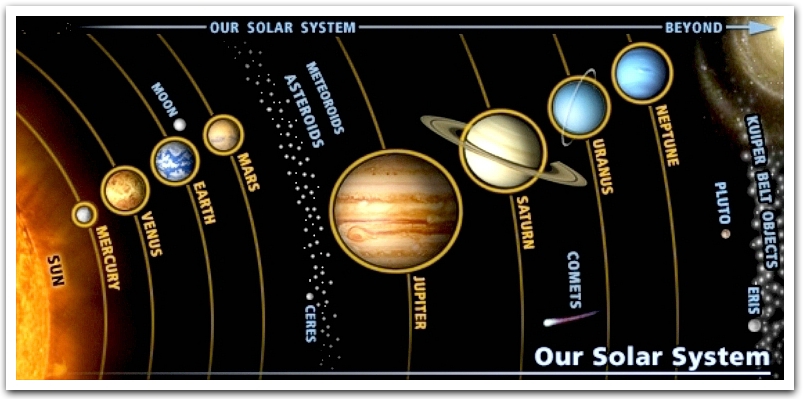
In the last article we discovered that there are six places in the universe where life might be found in an article by Seth Shostak at SETI on Space.com. If we traveled to these six places what resources would we find. What life could possible live there?
6 years away from Earth - Enceladus, Titan, Europa, Callisto and Ganymede
Europa
Water under 10 miles of ice & Geothermal heat - Europa is dark and cold - No Photosynthesis
Enceladus
Water and chemicals - On Enceladus you have a moon with volcanic activity, a silicate crust, frozen exterior, hydrocarbons, ammonia, propane, ethane and acetylene, in the atmosphere, ice and water. For humans to live on Enceladus you would need oxygen and carbon dioxide. Humans would be bouncing around all over the place on Enceladus since it is 1/7 the size of our moon. Cold on the outside, warm on the inside of the moon.
Titan
Liquid Fuel, Nitrogen, Solar Wind, Organic Smog, Frozen Water, Wind, Liquid Methane Rain, Dunes, Rivers, Lakes, Hurricanes, Lots of complex chemicals, dry atmosphere, warm upper atmosphere, cold surface, only gets 1% of sunlight that Eath Does, Geologically Young, Habitable 6 billion years from now - Titan is much larger than Enceladus and should therefore have more gravity. There is an abundant source of fuel - ethane and methane. The moon is very cold. Methane cycle analogous to Earth's water cycle. Titan is bigger than our moon and smaller than Earth.
Callisto and Ganymede
Liquid oceans under 60 miles of rock
Mars
150- 300 Days - Mars Salty Water - Beneath the surface of Mars - salty water.
Venus
97-153 days- Heat, sulfur dioxide and carbon monoxide, floating microbes, acidic clouds
How far are you willing to travel to find these resources ?
Let's Pretend We are on a Spaceship
One of the resources that stand out from the six most likely places is water that is hard to access (except for on Enceladus), geothermal activity, lack of sunlight/cold environment, chemicals that a human could not normally breathe in unless they lived in one of the most polluted cities in the world and were exposed to them over long periods of time and their bodies adabped. The only place where there might be enough sun to ever have photosynthesis could be Mars or Venus.
Perhaps Enceladus, Titan, Europa, Callisto and Ganymede are an example of what was happening after the ice age on earth and Mars and Venus are examples of what could happen if Earth warmed up too much, i.e. global warming. If carbon monoxide exists on Venus and sulfur dioxide, it would not be too far off to think that carbon dioxide could exist as well.
Enceladus is the Artic Cordillera an area of the Anartica in Northern Canada that was once volcanic.
Titan is am extremely cold city with the worst air pollution on Earth with areas that are like Earth's dessert - Nambi Dessert.
Mars has been compared to the Atacama dessert.
Venus is basically a very hot highly polluted city where you could feed off of microbes in the upper atmosphere if you were a preditor. This is an extreme simplification, but if you suspend your logic then the model might be applicable.
So are the moons of Jupiter and Saturn to cold for humans to ever inhabit. Could something warm them up? Or do we just need some fuel and water to survive there?
No comments:
Post a Comment